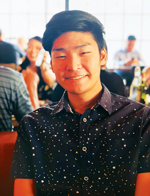
Brian Lee/ Diamond Bar High School 11th Grade
Alzheimer’s is a slow and progressive neurodegenerative disorder that leads to the loss of function pertaining to speech, memory, and general motor function. This happens because Alzheimer’s causes neuronal death, starting in the platform that controls memories, the hippocampus, and eventually leading to complete brain tissue atrophy. While treatments and drugs exist to slow down or even stop the progression of Alzheimer’s, if caught too late, as it usually is, Alzheimer’s leaves its victims unable to perform everyday, mundane tasks on their own.
But, what if there was a way to catch Alzheimer’s early, and nearly every time too.
Through the work of Jae Ho Sohn and his research team at UCSF, an artificial intelligence program was created with the purpose of diagnosing Alzheimer’s in its earlier, more controllable stages. Here’s how it works: cells need energy, or glucose, in order to function. When brain cells die as a result of Alzheimer’s or any other neurodegenerative disease, the amount of glucose found in the brain will be lower as a result. So, the A.I. looks for this lower level of glucose, which is not easily perceivable by humans, to diagnose Alzheimer’s early.
In fact, this A.I. actually learns from the previous cases that it has “studied” and because it has a perfect memory and process as opposed to humans, it can apply that previous knowledge to its maximum capacity to increase its performance. In Sohn’s study, 1,921 brain scans, taken years before actual diagnosis, were used to evaluate the effectiveness of the program. On its first run, the program correctly identified 92% of the scans that would end up developing Alzheimer’s and on its second run, the A.I. was correct on 98% of the scans. Even more surprising, the brains that were correctly identified as developing Alzheimer’s were scans from 75.8 months before diagnosis.
Nearly 6 million people are affected with Alzheimer’s in the United States alone. This neurological disease affects their everyday function and the likelihood of their future existing. With the advent of this technological innovation, Alzheimer’s could be checked on with little to no hassle on a regular basis and perhaps the 6 million people affected today will be the last generation to catch Alzheimer’s too late. With these precise mechanisms sophisticated enough to notice what seems to be trivial deficits in dopamine, Alzheimer’s may not be the long and drawn out death sentence that it is today.
<
Brian Lee/ Diamond Bar High School 11th Grade>

